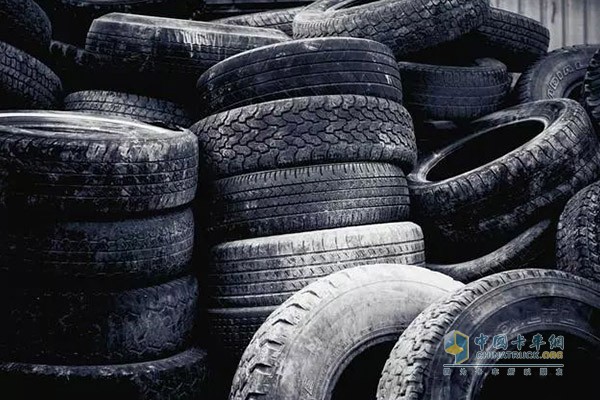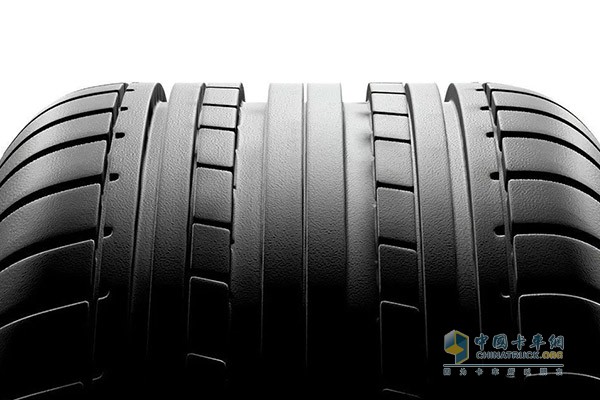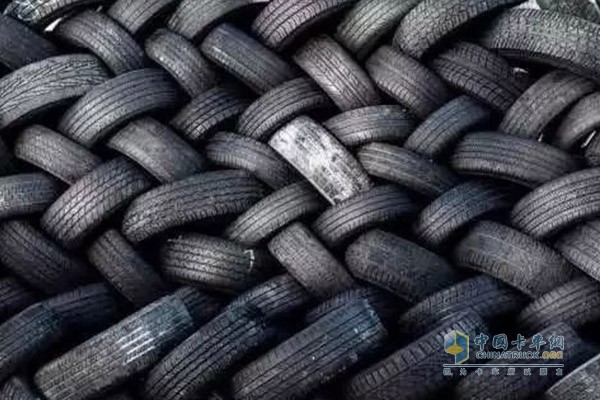Suggest five ways to dispose of used tires Li Xiaolin said that the total amount of waste tires produced in China each year ranks first in the world. In 2015 alone, the nation’s waste tire production reached 330 million or about 12 million tons. And it is increasing at an annual rate of 8% to 10%. It is estimated that by 2020, the amount of waste tires in China will be as high as 20 million tons. Scrap tires are called "black pollution" and the accumulation of large amounts of waste tires not only takes up land but also seriously damages the environment. Due to the uncertainty in the time required for tire disintegration, waste tires are not biodegradable, and their components include elements such as lead, chromium, cadmium, and other heavy metals. Improper disposal and management pose a threat to human health and the environment. Waste tires stacked in the open for a long time will not only occupy a large amount of land resources, but also can easily breed mosquito-borne diseases, seriously worsen the natural environment, and cause fire hazards. Therefore, the explosive increase in the number of waste tires continues to pose new challenges to China's eco-environmental protection strategy, and it has also become a very pressing industrial and environmental issue. Li Xiaolin suggested that scrap tires can be treated in five ways: prototype utilization, old tire retreading, recycling, auxiliary fuel and thermal cracking, and power generation technology processing. Prototype utilization, waste tire “prototype utilizationâ€, although not the final treatment, can waste The prolonged availability of tires is the most direct and cost-effective treatment. Including artificial reefs, tunnel projects, dock projects, agricultural (garden) art uses, recreational facilities, sand barriers, and other materials, but the amount is limited. For the treatment of pollution, only the existing pollution is decentralized and not eradicated; tire retreading, tire retreading is mainly used for trucks, construction vehicles, etc. Retreaded tires can save costs, reduce costs, and reduce energy consumption to some extent. However, there is a high requirement for the integrity of the tires, and only about 2% of the tires can be used to repair tires. The significance of the treatment is extremely limited; recycling, mainly for the production of recycled rubber and rubber powder, using recycled rubber to replace part of raw rubber used in rubber products. However, in the process of production of reclaimed rubber high temperature and high pressure dynamic desulfurization process will produce secondary exhaust pollution. Because of these reasons, the production of reclaimed rubber has gradually declined. Some countries have stopped the production of reclaimed rubber. Nowadays, the focus of the use of waste rubber in developed countries has shifted to the manufacture of rubber powders and other application fields. After passing through the site separation of scrap tires, the tread and other parts pass through. Crush can be made into powder. Rubber powder is widely used in highways, airstrips, fire-retardant materials, rubber and plastic soles, waterproof materials, sports track, and other fields; fine rubber powder can be used in automobile tires. The amount of waste tires used to produce rubber powder is still relatively small; the auxiliary fuel and waste tires have a calorific value of more than 8000 kcal, which is higher than the 5000 kcal of coal, and the residual ash after combustion is also comparable to that of coal combustion, so it is very Suitable for industries that require high heat energy. In the United States, Japan, and many European countries, many cement plants, power plants, paper mills, steel mills, and smelters use used tires as fuel, and they have achieved good results. However, this method reduces the production cost of the enterprise to a certain extent. At the same time, the air pollution caused by the discharged exhaust gas is quite serious. The principle of thermal cracking and power generation and thermal cracking is to place the waste tire in anoxic or inert gas for incompleteness. The thermal degradation can produce liquid, gaseous hydrocarbons and carbon residue. This technology firstly transports waste tires into blocks and sends them to thermal cracking reactors. After being heated in the reactor, they generate thermal decomposition reactions. Next, the gaseous products are separated by oil vapor in the condenser, condensing out a mixture of nearly diesel distillates. The oil is supplied to the fuel generator for power generation, and the separated non-condensable combustible gas is sent to the combustible gas generator for power generation through desulfurization to solve the secondary air pollution problem. The total power generation capacity is smaller than that of a small amount of thermal cracking system equipment. Some of the electricity can be connected to the grid and the solid product inside the reactor is mainly carbon black. The carbon black is separated from the steel wire by magnetic separation, and the carbon black is commercially available through further processing. Renovation work can not be delayed In fact, as early as September 2017, the six ministries and commissions of the Ministry of Environmental Protection, the National Development and Reform Commission, the Ministry of Industry and Information Technology, the Ministry of Public Security, the Ministry of Commerce, and the State Administration for Industry and Commerce announced the launch of joint e-waste, waste tires, and waste plastics. Dismantling and recycling of used clothes, waste household appliances, etc. Waste tires, as the work content, attract attention. The notice pointed out that the main task of the rectification and rectification of the work program is divided into three aspects: First, to ban a batch of illegally recycled and used enterprises in accordance with law; Second, to focus on rectifying the processing and distribution centers; Third, to standardize and guide the healthy development of a group of recycling enterprises . The work plan shows that from August to December in the four months of 2017, the work from deployment, platoon scheduling, clean-up and consolidation to spot-check summary was completed. Among them, it is necessary to improve the recycling and utilization of renewable resources infrastructure, and promote the use of advanced and applicable processing technology, agglomeration development, and centralized construction and operation of pollution control facilities. At present, with the development of the automobile industry in China, the number of car ownership continues to climb, and the problem of pollution and disposal of used tires is becoming increasingly prominent. It is imperative to solve the problem of reusing waste tires. “There are no rules, and the consolidation plan will regulate the comprehensive use of waste rubber in the industry and play a positive role in assisting and strengthening the benefits.†Cao Qingxin, consultant of the Comprehensive Rubber Rubber Utilization Subcommittee of the China Rubber Industry Association, sees the re-use of waste tires by the reorganization program. Has played a very active role, "through rectification, banning a batch, rectifying a batch, standardizing a batch, so that enterprises to the clean, large-scale and healthy development. On the basis of protecting the environment, to avoid secondary pollution, manufacturing clean renewable resources , to lay the foundation for the Chinese manufacturing of 2025." It is reported that the vast majority of developed countries adopt thermal energy utilization, burial, and the use of rubber powder. At the same time, subsidies and preferential policies were given to the recycling of waste tires, which greatly promoted and supported the recycling and utilization of used tires. In contrast, the disposal and recycling of used tires is relatively backward. At present, the comprehensive utilization of waste tires in China mainly includes tire retreading, reclaimed rubber, rubber powder and thermal cracking. Cao Qingxin stated that China's waste tyre processing methods are mainly based on the production of recycled rubber. It should develop the direct application of vulcanized rubber powder and rubber particles, increase the deep processing of reclaimed rubber and rubber powder, and vigorously promote the renovation of pre-vulcanized tyres. In addition, the use of waste tires to pyrolytically produce pyrolysis oil is a waste of resources and worthless projects. As heat energy utilization, each ton of used tires can achieve a capacity of 1.74 tons of 6500 kcal calorific value coal, and if the cracked tires produced per ton can only produce 40% of the pyrolysis oil. More importantly, the pyrolysis oil's calorific value is only 3800~4000 kcal. Therefore, the development of internationally accepted waste tire thermal energy utilization is the direction. "The disposal gap of domestic waste tires is mainly in the processing technology and equipment." Zhang Hongmin, chairman of the Shandong Rubber Association, said that my rubber resources are relatively small, and many used tires are made of reclaimed rubber. The annual output of reclaimed rubber in China is about 400 tons, a large amount. However, some small-scale reclaimed rubber production enterprises are lagging behind in terms of processing technology and equipment, resulting in serious pollution and very much in need of rectification. At present, it is relatively common for tire replacement tires to discard discarded tires. Moreover, the size, technical capabilities, government support, and economic benefits of waste tire recycling units are uneven, and secondary pollution occurs during the treatment process. These issues have yet to be resolved. Waste tire recycling needs policy support Li Xiaolin said that in all comprehensive utilizations, thermal cracking technology is currently the most important way to digest used tires. It can produce a large amount of clean energy for recycling, creating greater value and turning waste into treasure. He called for the use of thermal cracking technology to dispose of waste tires to generate electricity, and should equally enjoy the promotion subsidies for green clean energy such as biomass power generation and waste power generation, and promote the healthy development of this type of industry. Cao Qingxin also stated that used tires are used as environmentally-friendly waste recycling or environmental protection legislation in the world as industrial waste or solid waste legislation. Take the producer responsibility extension system and whoever produces the pollution who pays the policy. Different states in the United States have different legislation, but the policies for disposing of used tires are basically similar. They each give a disposal fee of 3-5 dollars for each tire; Canada stipulates a handling fee of 60 US dollars for each ton of waste tires that are recycled; and Europe gives one ton for each ton. The disposal fee is 140 Euros; Hong Kong is charged by the EPD for a disposal fee of 1,700 Hong Kong dollars per ton. The fees are paid by the collection and disposal of used tires, and subsidies are given to companies that benefit from waste. In this regard, the industry generally believes that increasing policy support can effectively promote the reuse of used tires. On December 25, 2016, the General Office of the State Council promulgated (2016) No. 99 “Circular on the Implementation of the Extended Responsibility System for Producers' Responsibility†to bring hope to waste rubber comprehensive utilization enterprises and establish waste tire recycling systems at local and national levels. “In terms of recycling and disposal of used tires, local governments (fiscals), tire manufacturers, tire users, etc. can each take part in the cost of these tires. These costs are used for the recovery and disposal of used tires,†said Luo Jiliang. It can adopt a joint promotion approach by enterprises, governments, and associations. It mainly uses the government’s policy resources and uses the technical resources of the association to allow enterprises to have sufficient capabilities to complete the recovery and disposal. Interior Detailer,Internal Car Cleaning,Internal Cleaner,Internal Windscreen Cleaner Linyi Yiqun Packaging Products Co., Ltd , https://www.yiqun-china.com Suggest five ways to dispose of used tires
Suggest five ways to dispose of used tires  Waste tire rectification work is in no hurry
Waste tire rectification work is in no hurry  Waste tire recycling needs policy support
Waste tire recycling needs policy support
The rectification of the used tires market must be supported by policies without delay
On March 20, 2018, the "two sessions" ended. It is reported that Li Xiaolin, deputy chairman and secretary general of the China Siyuan Engineering and Poverty Alleviation Foundation who served as a member of the Third National Committee of the Chinese People's Political Consultative Conference (CPPCC), was elected as the deputy to the National People's Congress in 2018. He proposed the "About using advanced technologies" in the "two sessions" this year. The proposal of policy support for entities that deal with used tires and other proposals.